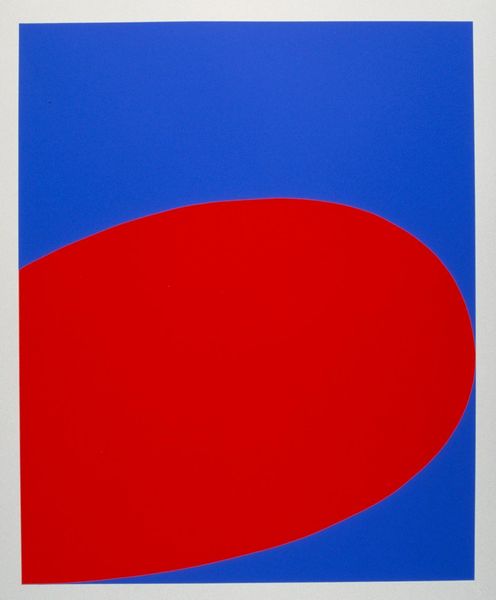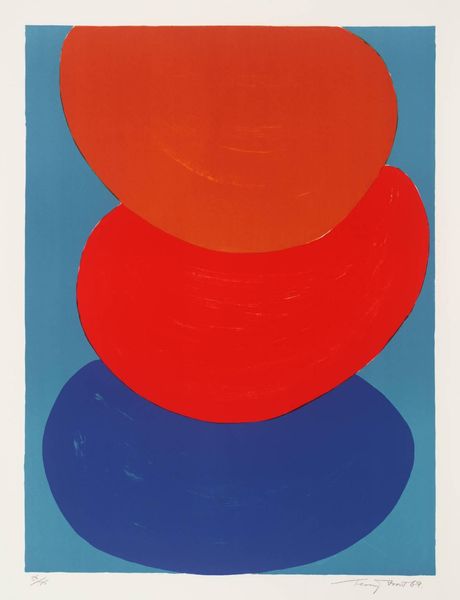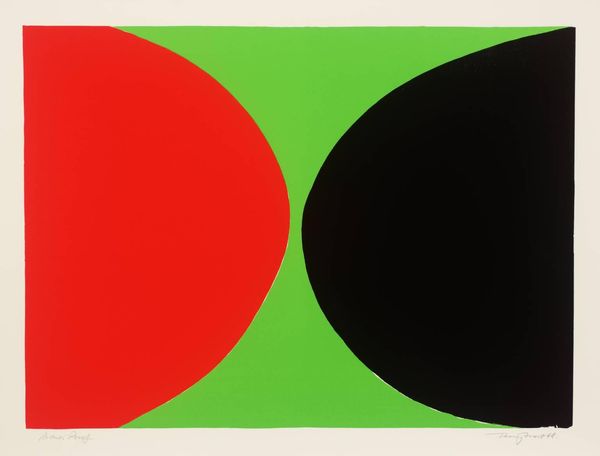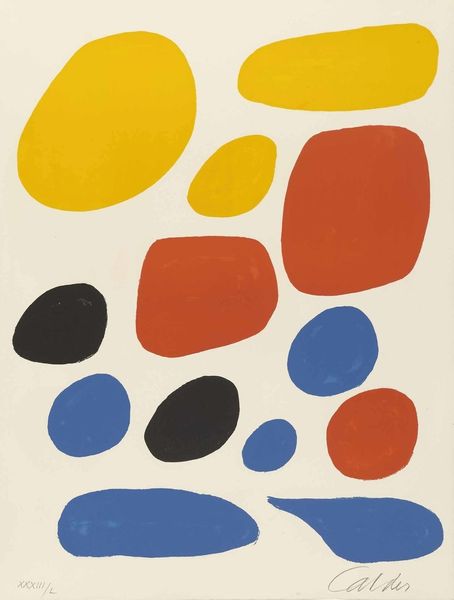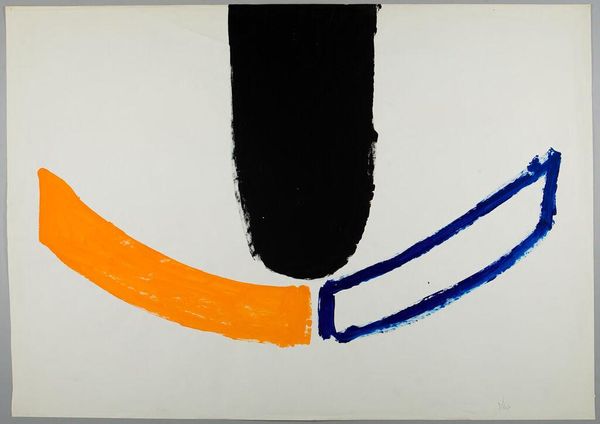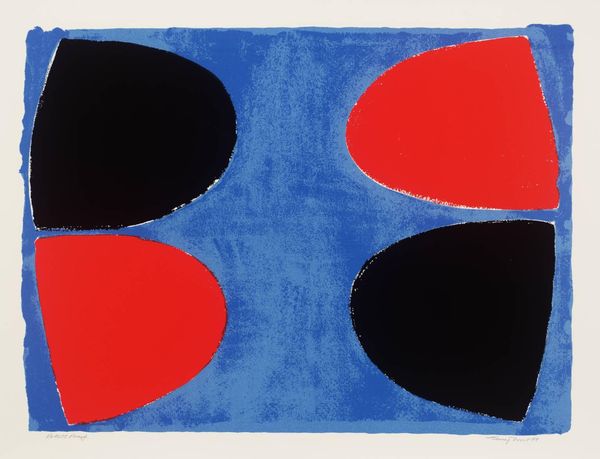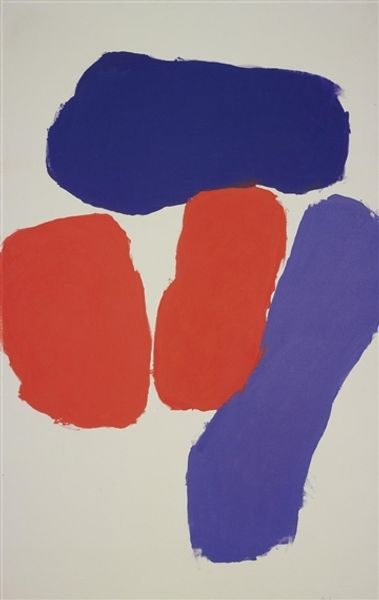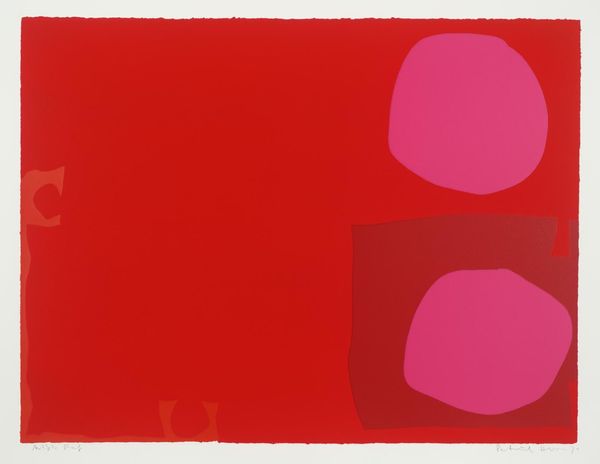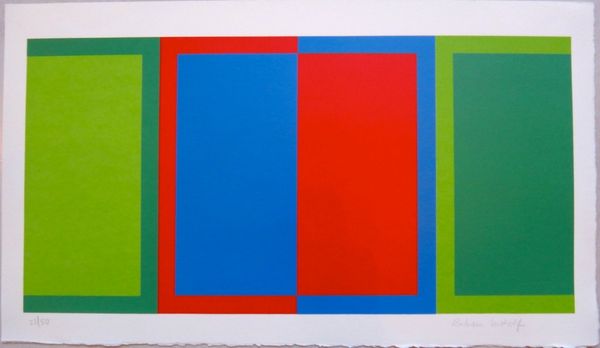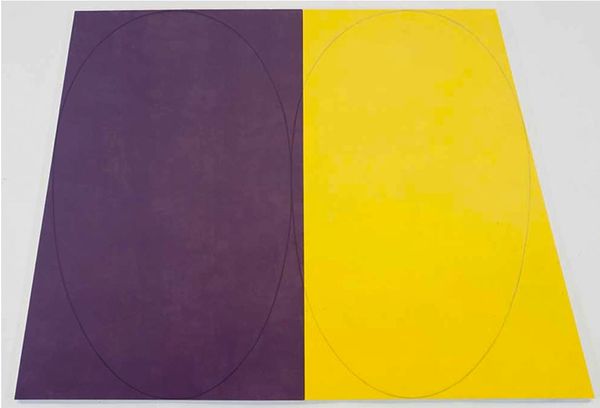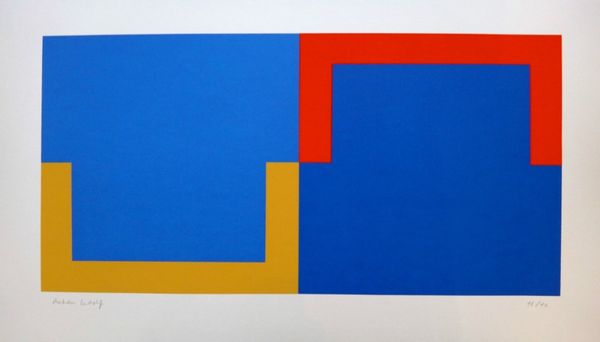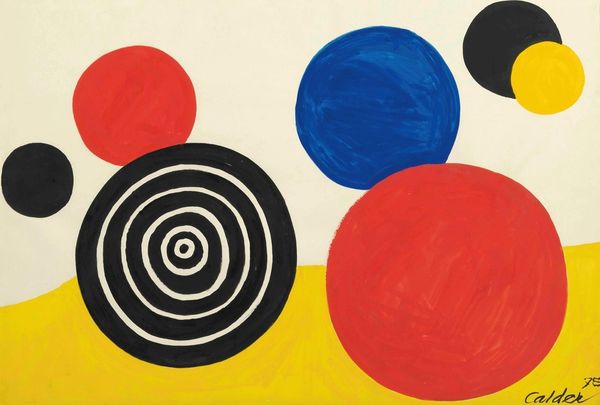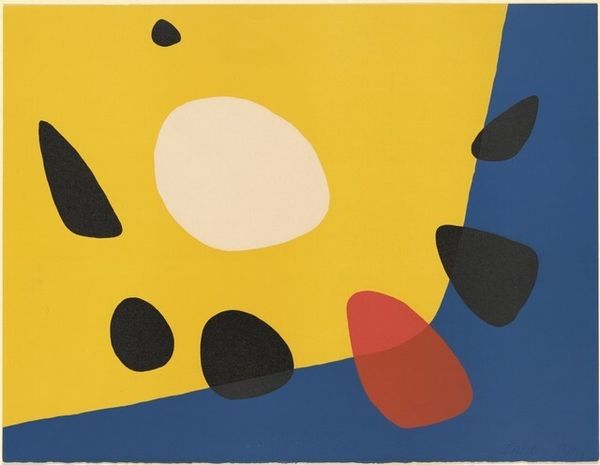
mixed-media, lithograph, print, paper
#
mixed-media
#
lithograph
#
minimalism
# print
#
circle
#
pop art
#
colour-field-painting
#
paper
#
form
#
rectangle
#
geometric-abstraction
#
abstraction
#
pop-art
#
line
#
modernism
#
hard-edge-painting
#
orange
Copyright: (c) Ellsworth Kelly, all rights reserved
Ellsworth Kelly made this lithograph, ‘Blue and Orange from Suite of Twenty-Seven Color Lithographs.’ Kelly’s abstract language developed in post-war America amid debates about the role of art, and the relationship between painting and other aspects of culture. This print offers a lesson in pure sensation, reducing visual experience to its most elemental components. The colors are bold, the forms are simple. But by placing them in close proximity, Kelly forces us to ask: how do these shapes and colors relate? Is there a hidden order? The work’s institutional context is also relevant; by the time Kelly made this print, abstraction had become associated with American power. Thinkers like Clement Greenberg championed abstract art as an expression of freedom in contrast to the propagandistic social realism of the Soviet Union. To fully understand this print, art historians consult artists’ writings, exhibition reviews, and period manifestos. The meaning of art is never self-evident, it is always contingent on its social context.
Comments
No comments
Be the first to comment and join the conversation on the ultimate creative platform.
